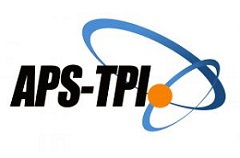Analysis of Learning Module Effectiveness Self-Efficacy Review Oo Students with Visual Impairment
Abstract
Keywords
Full Text:
PDFReferences
Alwisol. (2009). Pesikologi Kepribadian. UMM Press.
Atmaja, J. . (2018). Pendidikan Dan Bimbingan Anak Berkebutuhan Khusus. Remaja Rosda Karya.
Bandura, A. (1977). Albert Bandura- Social Learning Theory. Simply Psychology, 1–5.
Crain, W. (2021). Bandura’s Social Learning Theory. In Theories of Development: Concepts and Applications (pp. 218–237). https://doi.org/10.4324/9781315662473-15
Desiningrum, D. . (2017). Psikologi Anak Berkebutuhan Khusus. Universitas Diponegoro.
Drigas, A., Dede, D. E., & Dedes, S. (2020). Mobile and other applications for mental imagery to improve learning disabilities and mental health. In International Journal of Computer …. https://www.researchgate.net/profile/Athanasios_Drigas/publication/343737338_Mobile_and_other_applications_for_mental_imagery_to_improve_learning_disabilities_and_mental_health/links/5f3ce7c792851cd302039129/Mobile-and-other-applications-for-mental-imager
Effendi, R., Herpratiwi, H., & Sutiarso, S. (2021). Pengembangan LKPD Matematika Berbasis Problem Based Learning di Sekolah Dasar. Jurnal Basicedu, 5(2), 920–929.
Hidayat, & Suwandi. (2013). Pendidikan Anak Berkebutuhan Khusus Tunanetra. PT Luxima Metro Indah.
Kirana, A., & Suhartono. (2020). Pengembangan Modul Pembelajaran Matematika SD Berorientasi HOTS (Higher-Order Thinking Skills). Jurnal Kajian, Penelitian Dan Pengembangan Kependidikan, 11(2), 172–178. https://doi.org/https://doi.org/10.31764/paedagoria.v11i2.2486
Leli Erawati, I., & Margareta Sinaga, R. (2016). Pendidikan Karakter Bangsa Pada Anak Berkebutuhan Khusus Dalam Pendidikan Inklusif 1). Jurnal Studi Sosial, 4(1).
Nindiyana, A. (2021). The Use of Audio Media vs . Audio-Visual Media in Teaching Listening. RETAIN: Research Language Teaching in Indonesia, 09(2014), 8–12. https://ejournal.unesa.ac.id/index.php/retain/article/view/36639
Nurhidayati, A., Putro, S. C., & Widiyaningtyas, T. (2018). PENERAPAN MODEL PBL BERBANTUAN E-MODUL BERBASIS FLIPBOOK DIBANDINGKAN BERBANTUAN BAHAN AJAR CETAK PENGARUHNYA TERHADAP HASIL BELAJAR PEMROGRAMAN SISWA SMK. Teknologi Dan Kejuruan: Jurnal Teknologi, Kejuruan, Dan Pengajarannya, 41(2), 130–138. https://doi.org/10.17977/um031v41i22018p130
Pratiwi, S. (2011). Psikologi Anak Berkebutuhan Khusus. Semarang University Press.
Puspitasari, A. D. (2019). Penerapan Media Pembelajaran Fisika Menggunakan Modul Cetak dan Modul Elektronik pada Siswa SMA. Jurnal Pendidikan Fisika, 7(1), 17–25. https://doi.org/https://doi.org/10.24252/jpf.v7i1.7155
Rio Adriyanto, A., Santosa, I., & Syarief, A. (2020). Penanaman nilai dalam materi ajar pembelajaran daring perguruan tinggi. Jurnal Teori Dan Praksis Pembelajaran IPS, 5(1), 39–50. https://doi.org/10.17977/um022v5i12020p039
Sagala, A. S. H. B. dan K. N. B. (2019). MODEL BIMBINGAN KONSELING ISLAM BAGI SISWA TUNANETRA. Jurnal Al Isyraq, 2(1).
Shannon-Baker, P. (2016). Making Paradigms Meaningful in Mixed Methods Research. Journal of Mixed Methods Research, 10(4). https://doi.org/10.1177/1558689815575861
Somantri, S. (2006). Psikologi Anak Luar Biasa. PT Refika Aditama.
Sugiyono, D. (2018). Metode penelitian kuatintatif , kualitatif dan R & D. In Bandung: Alfabeta.
Sujanem, R., Suwindra, I. N. P., & Tika, I. K. T. (2009). Pengembangan Modul Fisika Kontekstual Interaktif Berbasis Web Untuk Siswa Kelas. Jurnal Pendidikan Dan Pengajaran, 42(2).
Utari, A., & Senen, S. H. (2018). Pengaruh Self Efficacy Terhadap Prestasi Belajar pada Mata Pelajaran Ekonomi. UTILITY: Jurnal Ilmiah Pendidikan Dan Ekonomi, 2(1), 1–9. https://doi.org/10.30599/utility.v2i1.279
Utomo. (2019). Seluk Beluk Tunanetra dan Strategi Pembelajarannya. Nopan Omeri, 12(1).
Widjayanti, A., & Hitipeuw. (2005). Ortopedagogik Anak Tunanetra. Depdikbud.
Wulandari, M., Umaroh, S. K., & Mariskha, S. E. (2020). PENGARUH EFIKASI DIRI DAN KONTROL DIRI TERHADAP PROKRASTINASI AKADEMIK PADA MAHASISWA UNIVERSITAS 17 AGUSTUS 1945 SAMARINDA. MOTIVA JURNAL PSIKOLOGI, 3(1). https://doi.org/10.31293/mv.v3i1.4808
Yapono, F. (2013). Konsep-Diri, Kecerdasan Emosi Dan Efikasi-Diri. Persona:Jurnal Psikologi Indonesia, 2(3). https://doi.org/10.30996/persona.v2i3.136
Refbacks
- There are currently no refbacks.





.png)













